Harsil Valley Uttarakhand 2025: Complete Roadtrip Package
Published on July 15, 2025
Harsil Valley tour package, Hidden in the lap of Uttarakhand’s Garhwal Himalayas, Harsil Valley is the kind of place you visit to slow down, breathe deep, and reconnect—with nature, and maybe even with yourself. With pine forests, apple orchards, snow-capped peaks, and a soothing Bhagirathi River flowing beside you, this lesser-known Himalayan paradise is perfect for a peaceful mountain escape.
Whether you’re planning a soulful getaway or an adventure-packed road trip, our Harsil Valley tour package is crafted for every traveler seeking the untouched beauty of Uttarakhand.
Delhi to Harsil Valley Road Trip: The Journey Begins
The journey from Delhi to Harsil Valley is not just a route; it’s a scenic ride full of surprises. Covering around 500 km, this road trip takes you through iconic hill stations, charming dhabas, river valleys, and mountain curves.
Suggested Route (Approx. 14–15 hrs):
Delhi – Haridwar – Rishikesh – Chamba – Uttarkashi – Harsil Valley
Once you cross Uttarkashi, the views open up like a dream. The Uttarkashi to Harsil Valley route is dotted with mountain streams, pine canopies, and peaceful villages.
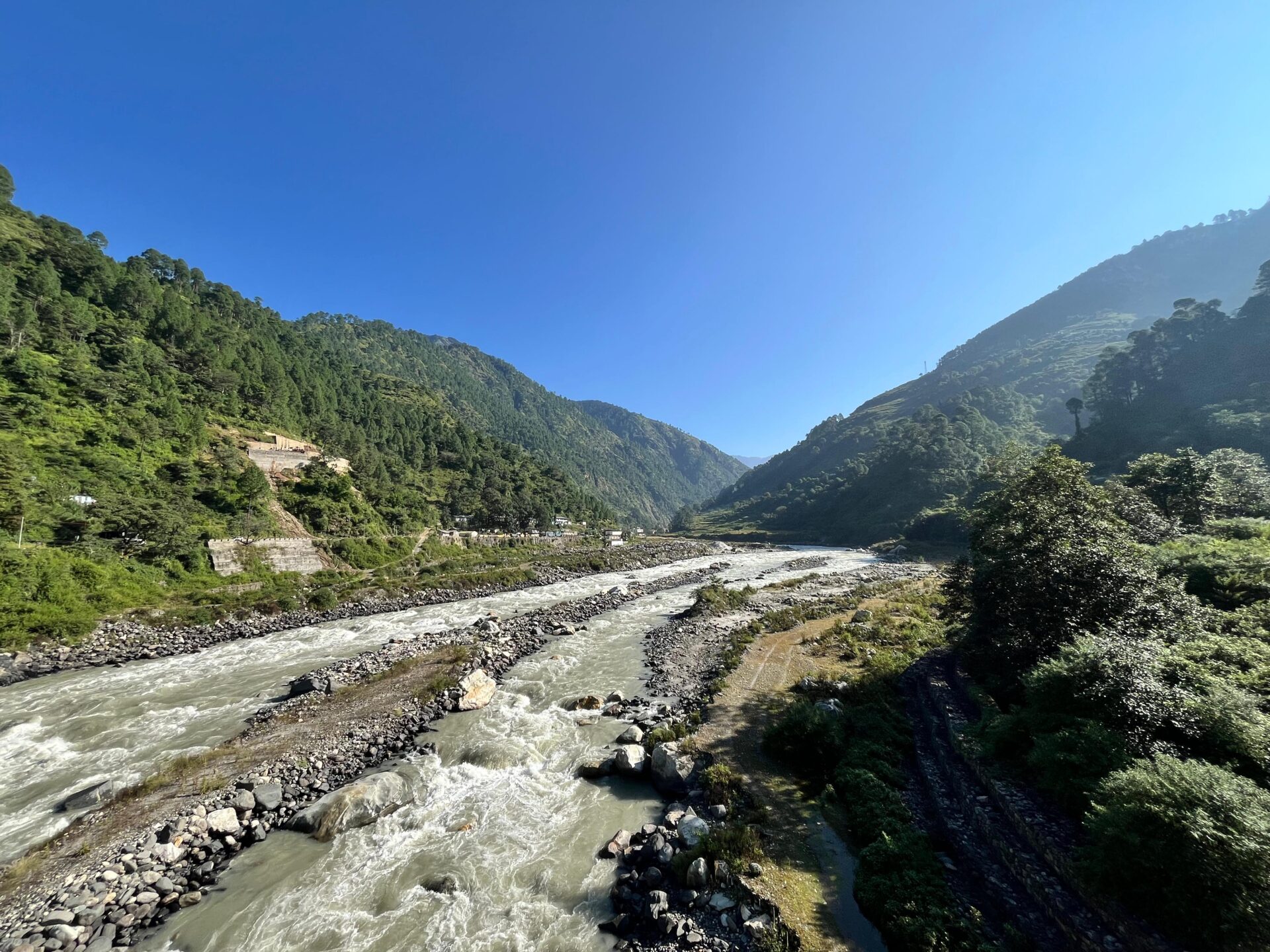
Where Silence Meets the Sky: Harsil Valley Journey Day by Day
Day 0: Departure from Delhi – Into the Himalayas We Go
-
Assemble at Botanical Garden, Noida by evening.
-
Meet your Trip Captain and fellow travelers.
-
Begin the overnight journey to Harsil in a comfortable AC vehicle.
-
Enjoy halts, food breaks, and stunning views as you leave the city lights behind.
The road trip to Harsil is not just a commute—it’s the beginning of your Himalayan story.
Day 1: En Route to Paradise – Uttarkashi and Arrival at Harsil Valley
-
Early morning arrival in Uttarkashi, the gateway to the Himalayas.
-
Enjoy breakfast amidst mountain views.
-
Continue your drive along the Bhagirathi River to reach Harsil Valley, a peaceful paradise surrounded by deodar trees and apple orchards.
-
Check in to your homestay or riverside cottage.
-
Spend the evening exploring the village or relaxing by the river.
Let the mountain air refresh you—this is your time to breathe deeper and live slower.
Day 2: Thrills & Tranquility – Gartang Gali, Gangotri Temple & Surya Kund
-
After breakfast, set out for the iconic Gartang Gali Trek—a restored wooden trail once used for Indo-Tibetan trade.
-
Walk the cliff-hugging bridge and soak in panoramic Himalayan views.
-
Proceed to Gangotri Temple, one of the Char Dhams and origin point of the sacred Ganges.
-
Witness the gushing waters of Surya Kund, a natural waterfall near the temple believed to hold healing energy.
-
Return to Harsil by evening and enjoy a cozy bonfire night (weather permitting).
Adventure meets divinity as you walk the ancient paths of explorers and sages.
Day 3: Local Life & Hidden Trails – Bagori Village and Lama Top Hike
-
Begin your morning with a soulful walk to Bagori Village, home to the Bhotiya tribe and traditional wooden houses. Experience Himalayan culture firsthand.
-
Later, head for a short yet scenic hike to Lama Top, a hidden viewpoint offering panoramic vistas of Harsil Valley and the snow-clad peaks.
-
Return to the stay for freshen-up, then begin the drive back to Delhi with unforgettable memories.
Before you leave, the mountains will gift you one final view—a promise to return again.
Inclusions:
- A/c Transportation- Delhi to Delhi.
- 2 Nights Stay at Harsil (Homestay/Hotel).
- Sightseeing as per itinerary.
- Meals: 2 Breakfasts & 2 Dinners.
- Bonfire.
- Trip coordinator.
- 24X7 Support.
Exclusions:
- 5% GST
- Any personal expenses/adventure activities
- Anything not mentioned in the itinerary
- Any entry tickets/fees
- Any meals/drinks other than inclusion
- Hot water availability.

What to Pack and What to Skip for Harsil Valley
When you're heading to the calm, cool, and high-altitude beauty of Harsil Valley, packing smart can make all the difference. The weather can surprise you—sunny mornings, chilly evenings, and even snowfall in shoulder seasons. So, here's your go-to list for what to carry—and what to leave behind.
✅ What to Pack for Harsil Valley
1. Layered Clothing (Warm + Light):
Harsil mornings and nights can be cold even in summer. Carry warm woolens, a fleece jacket, and a windproof outer layer. For daytime, comfortable cotton t-shirts and track pants are perfect.
2. Waterproof Jacket or Poncho:
Unexpected mountain drizzles? A lightweight raincoat or poncho will be a lifesaver.
3. Trekking Shoes:
The Gartang Gali trek and local trails need good grip. Pack durable, ankle-support trekking shoes—they’ll give you confidence on uneven terrain.
4. Woolen Cap + Gloves + Socks:
Essential for mornings and night outings, especially if you’re staying by the riverside or visiting Gangotri early in the day.
5. Sunscreen & Sunglasses:
Don’t be fooled by the cold. At high altitudes, the sun is harsh. Pack a high-SPF sunscreen and UV-protected sunglasses.
6. Personal Medications & Basic First Aid:
Carry altitude sickness medicine if you're sensitive, along with basic first aid, pain relief balm, motion sickness pills, and band-aids.
7. Power Bank & Torchlight:
Remote stays may have power cuts. A fully charged power bank and a torch (or headlamp) are must-haves.
8. Reusable Water Bottle:
Help the Himalayas stay clean. Bring a refillable bottle instead of buying plastic ones.
9. Personal Hygiene Kit:
Wet wipes, sanitizer, biodegradable soap, toothbrush, towel—pack your own essentials, as shops are limited in the valley.
10. Documents & ID Proof:
Especially if you're visiting Gartang Gali or Nelong Valley, an Aadhar card or photo ID may be needed at check posts.
What to Skip for Harsil Valley
1. Fancy or Party Wear:
Harsil is more about peace than posing. Leave your clubwear or designer dresses at home—opt for comfort and function.
2. Heavy Luggage & Suitcases:
Avoid hard-top trolleys. Backpacks or duffel bags are easier to carry and more terrain-friendly.
3. Flip-Flops or Heels:
You won’t use them here. Trails, uneven roads, and riversides are not for delicate footwear.
4. Too Many Electronic Gadgets:
Connectivity is patchy. Carry essentials like your phone and camera, but avoid laptops or other devices you won’t need.
5. Excess Cash:
Basic cash is fine, but there’s no need to carry large amounts. UPI payments work in many places now, especially in Uttarkashi and Gangotri.
6. Unnecessary Snacks or Junk Food:
You’ll get basic food and Maggi everywhere. Overpacking snacks just adds weight. Try local pahadi food instead!
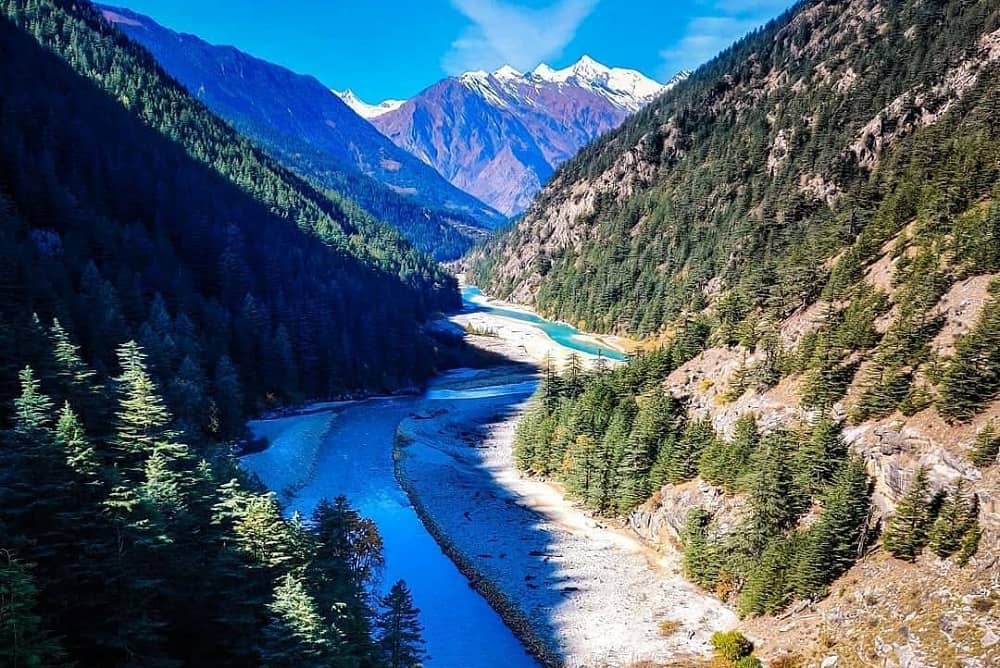
Sleeping Under the Stars: Stay Options in Harsil Valley
Harsil Valley doesn’t offer five-star luxury—but it offers something rarer: peace, views, and the warmth of mountain hospitality. Whether you're a backpacker chasing trails or a couple seeking quiet by the river, Harsil’s accommodations have a soul-soothing simplicity that fits perfectly with the place.
Types of Accommodation in Harsil Valley
1. Homestays: The Local Way to Stay
The most authentic way to experience Harsil is through a traditional Garhwali homestay. Wake up to home-cooked food, stories from the host family, and a view of apple orchards right outside your window.
-
Ideal for: Culture lovers, solo travelers, photographers
-
Locations: Bagori village, Dharali, and Harsil market area
-
Bonus: Get served piping hot rajma-chawal with a mountain twist!
2. Riverside Cottages: Peace with a View
If you’re looking for quiet comfort and a little privacy, go for a riverside cottage along the Bhagirathi. With wooden interiors, cozy beds, and the sound of flowing water, it's the perfect mountain mood.
-
Ideal for: Couples, families, nature lovers
-
Facilities: Attached washrooms, room heaters (in winter), home-cooked meals
-
Views: Snow-clad peaks, pine forests, and riverfront serenity
3. Budget Guesthouses: Simple & Functional
Basic lodges and guesthouses are available near the Harsil main road or market. They’re easy on the pocket, clean, and ideal for travelers passing through to Gangotri.
-
Ideal for: Budget travelers, trekking groups, pilgrims
-
Nearby: Shops, eateries, parking
-
Tip: Book in advance during May–June and September–October
4. Forest Department Rest Houses (GMVN)
For a rustic yet reliable stay, consider booking a GMVN (Garhwal Mandal Vikas Nigam) guest house. These are run by the Uttarakhand government and offer modest rooms in scenic spots.
-
Ideal for: Government employees, senior citizens, planners
-
Booking: Online via the GMVN website (often seasonal)
Accommodation Tips for Harsil Valley
-
Book Early: During peak seasons (May–June, Sep–Oct), options fill fast
-
Power Backup: Many stays rely on solar or generator backup—be prepared
-
Network: Most properties have weak or no Wi-Fi. It’s a chance to unplug
-
Local Cuisine: Ask for local dishes like madua roti, pahadi dal, and Himalayan tea
-
Eco-Friendly Stays: Choose properties that follow waste management and plastic-free practices
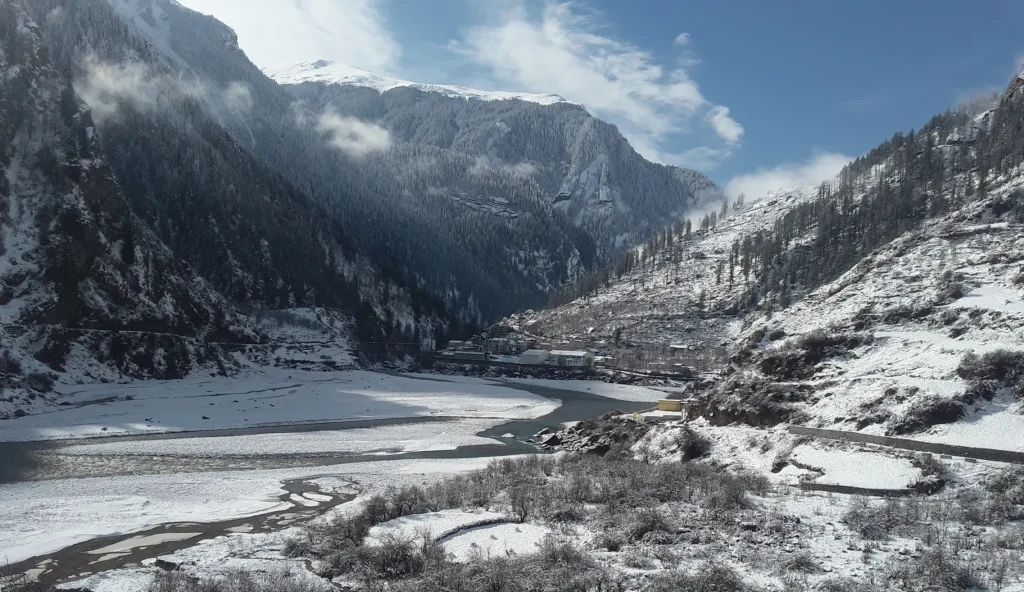
Harsil Valley Weather Guide: When the Mountains Call Softly
Harsil Valley doesn’t scream for attention—it whispers with rustling deodar trees, drifting clouds, and the gentle flow of the Bhagirathi River. But when you plan your trip, understanding the weather is key. Each season paints Harsil in a different hue—snow, blossoms, golden leaves, or lush green trails.
Here’s everything you need to know about Harsil Valley weather and the best time to visit.
Spring (March to May): Bloom & Bliss
As winter recedes, spring brings life back to the valley. Apple trees begin to bloom, the snow on the peaks starts to melt, and the weather turns pleasantly cold, especially in the evenings.
-
Temperature: 5°C to 18°C
-
What’s Special: Apple blossoms, clear skies, perfect for trekking
-
Ideal For: Nature walks, photographers, peaceful escapes
Summer (June): Green, Fresh & Full of Life
June is one of the best months to visit Harsil Valley if you love moderate temperatures and want to avoid the heatwaves in the plains. The forests are lush, and the mountain breeze feels like poetry.
-
Temperature: 8°C to 20°C
-
What’s Special: Comfortable weather for sightseeing, ideal for Gartang Gali trek
-
Ideal For: Roadtrips, family vacations, group travelers
Monsoon (July to August): Misty & Moody
Monsoon turns Harsil into a mystical wonderland, with clouds dancing over the valley and the river swelling with fresh energy. But travel becomes risky due to slippery roads and landslides.
-
Temperature: 10°C to 17°C
-
What’s Special: Lush greenery, romantic fog, rare tourist crowd
-
Caution: Not recommended due to roadblocks and weather-related delays
Autumn (September to Mid-November): Golden Calm
This is the sweet spot for visiting Harsil Valley. The air is crisp, the skies are clear, and the valley glows with golden forests and snow-kissed peaks in the distance. It’s the most photogenic season of the year.
-
Temperature: 3°C to 16°C
-
What’s Special: Best views of the Himalayas, smoothest travel roads
-
Ideal For: Trekking, couples, photography tours, spiritual getaways
Winter (Mid-November to February): Snow & Silence
If you’re looking for a snowy Himalayan experience, winter in Harsil won’t disappoint. The valley often gets blanketed in snow, and many parts (including nearby Gangotri) close due to heavy snowfall.
-
Temperature: -5°C to 8°C
-
What’s Special: Snowfall, frozen rivers, postcard-perfect landscapes
-
Caution: Limited stay options, check road conditions before traveling

Where Silence Paints the Sky: The View from Harsil Valley
If there’s one word that captures the view of Harsil Valley, it’s timeless. This isn’t your typical tourist panorama with crowds clicking selfies. This is the kind of place where every glance feels like a prayer, every corner like a canvas of serenity.
Mountains That Whisper Peace
Framed by the snow-draped peaks of the Garhwal Himalayas, Harsil Valley sits quietly at 8,600 feet above sea level, offering views that don’t just impress—they heal. The distant ridgelines shimmer in sunlight, while clouds drift slowly like wandering thoughts.
No honking, no rush—just mountains whispering in the wind.
Pine Forests & Apple Orchards
The valley is wrapped in dense deodar and pine forests, giving it an evergreen glow year-round. Dotted across this green are apple orchards, especially in Dharali and Bagori, their symmetry adding charm to the wildness.
In spring, you’ll see white apple blossoms swaying like snowflakes, and in autumn, the golden-red leaves dance across the trails.
Bhagirathi River: A Gentle Companion
The Bhagirathi River, born from the Gangotri Glacier, flows alongside Harsil like a sacred thread. Sometimes it’s calm and mirror-like, reflecting the sky. Sometimes it gushes over rocks with energy and sound. Either way, it adds a soul-stirring dimension to the view.
The best way to enjoy it? Sit by the riverbank early morning with a cup of pahadi chai—and do nothing. Just look, listen, and feel.
Village Views with a Himalayan Backdrop
From the wooden homes of Bagori village to the stepped fields of Dharali, every view in Harsil feels untouched and authentic. The villagers go about their lives at nature’s pace, giving you a rare glimpse of life in the lap of the Himalayas.
You’ll see prayer flags fluttering, kids playing barefoot, and an occasional monk or shepherd passing by.
Stars Like You’ve Never Seen Before
Once the sun dips behind the ridges, Harsil’s sky puts on a different show. With almost no light pollution, the stars feel close enough to touch. You can lie on your back and trace the constellations, or just get lost in the Milky Way’s glow.
The night view in Harsil is not just romantic—it’s cosmic.
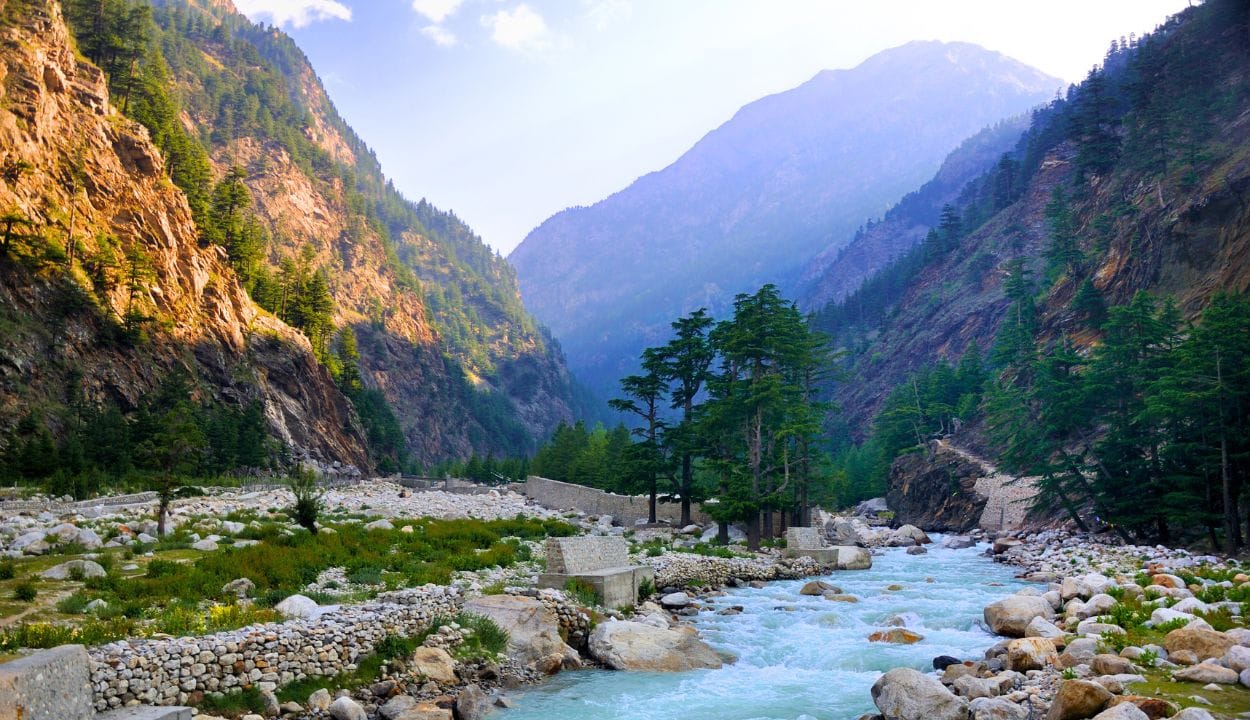
Hidden Corners & Himalayan Charms: Places to Visit in Harsil Valley
Harsil Valley isn't packed with mainstream attractions or noisy crowds. And that’s exactly what makes it magical. The real treasure here lies in quiet walks, ancient wooden villages, pristine riversides, and untouched landscapes that speak the language of peace.
If you're wondering where to go once you arrive in this peaceful Himalayan valley—here’s a list of must-visit places in and around Harsil, each with its own quiet story to tell.
1. Bagori Village: Where Time Took a Pause
Just a short walk from Harsil lies Bagori, a charming traditional Garhwali village that seems untouched by time. Known for its wooden houses with carved balconies, stone-paved paths, and quiet, welcoming locals, Bagori gives you a glimpse of Himalayan life as it was decades ago.
-
Don’t miss: Conversations with locals, heritage architecture, and local woollen handicrafts
-
Best for: Culture seekers, slow travelers, photographers
2. Dharali Village: Apple Orchards & Scenic Trails
Only 2 km from Harsil, Dharali is famous for its lush apple orchards and riverbank charm. The landscape here changes beautifully with the seasons—blossoms in spring, fruit in summer, golden tones in autumn, and snow in winter.
-
Don’t miss: A walk through orchards, riverside picnics, local temples
-
Best for: Nature lovers, family travelers, spiritual souls
3. Mukhba Village & Mukhba Devi Temple
Mukhba is not just a pretty village—it holds religious significance. It is the winter home of the idol of Goddess Ganga, which is brought down from Gangotri when the temple there closes for the season.
-
Don’t miss: The beautiful wooden temple, stories from the priests
-
Best for: Spiritual travelers, cultural enthusiasts
4. Gartang Gali: The Cliff Walk of Courage
One of the most thrilling spots near Harsil, Gartang Gali is an ancient wooden pathway built into a vertical cliff—originally used by Indo-Tibetan traders. Restored recently, the trail is now a short but stunning trek that offers views of deep gorges and towering peaks.
-
Distance from Harsil: ~25 km
-
Don’t miss: The adrenaline of walking along the cliffside and panoramic views
-
Best for: Adventure seekers, trekkers, photographers
5. Nelong Valley (with Permit)
For those who love remote wilderness, Nelong Valley is a must-visit. Located near the Indo-Tibetan border, this high-altitude desert landscape is often compared to Ladakh—but it's less explored and quieter.
-
Permit required (issued in Uttarkashi)
-
Don’t miss: Martian-like terrain, wild beauty, border-side peace
-
Best for: Offbeat explorers, thrill lovers
6. Gangotri Temple & Bhagirath Shila
Just 25 km from Harsil, Gangotri Temple is one of the four Char Dham shrines. Apart from spiritual energy, the views here are breathtaking. Don’t miss Bhagirath Shila, the sacred rock where King Bhagirath is said to have meditated to bring the Ganges to earth.
-
Don’t miss: Bhagirathi river views, Pandava Gufa (a short trek nearby)
-
Best for: Pilgrims, soul searchers, nature lovers
7. Sattal of Harsil: Hidden Lakes Among the Pines
Not to be confused with the famous Sattal near Nainital, Harsil’s version of Sattal is a cluster of seven small alpine lakes hidden amidst forests. A short trek takes you to these serene water bodies—ideal for meditation, quiet time, or photography.
-
Don’t miss: Sunset reflections, wildflowers, complete silence
-
Best for: Offbeat travelers, couples, peace seekers
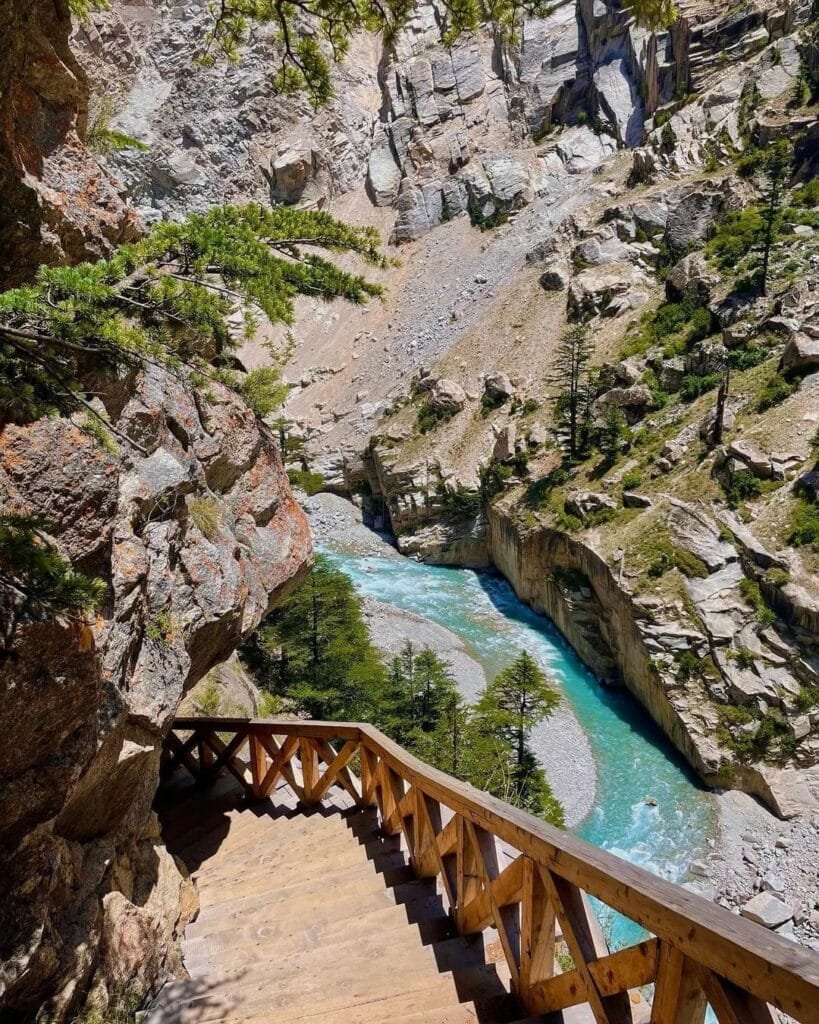
Whispers Through the Pines: The Untold History of Harsil
Tucked away in the towering folds of the Garhwal Himalayas, Harsil Valley is more than just a scenic stop between Uttarkashi and Gangotri—it's a place where history echoes softly through pine forests, riverbeds, and wooden rooftops. While Harsil may not appear in bold headlines of ancient dynasties, it has lived a quieter history—one shaped by trade, pilgrimage, and forgotten heroes.
A Himalayan Crossroad of Cultures
Historically, Harsil was a vital stop on the Indo-Tibetan trade route. Traders would travel through rugged terrain, crossing what is now the Gartang Gali trail, to exchange salt, wool, and grain. The wooden path clinging to cliffs wasn't just daring—it was lifeline commerce.
This trade brought a blend of cultures, with Tibetan influence quietly mixing with Garhwali traditions. Even today, you’ll notice prayer flags fluttering beside traditional Hindu shrines—an echo of that cultural blend.
Pilgrimage & Sacred Geography
Harsil’s spiritual significance grew as it became a resting point for pilgrims on their way to Gangotri—one of the four Char Dham sites. While Gangotri Temple has ancient roots, the nearby Mukhba village gained importance as the winter home of the idol of Goddess Ganga, when the high-altitude temple becomes inaccessible due to snow.
Thus, Harsil wasn't just a physical pause—it was a spiritual one, too. It became a quiet sanctuary for sages, sadhus, and seekers who wished to meditate away from the chaos of temple towns.
Bagori Village & the Wooden Architecture Legacy
Just across the river lies Bagori, a living time capsule of Harsil’s traditional life. The wood-carved homes with stone bases were built by early settlers and traders. The use of deodar wood wasn’t just for aesthetics—it was chosen for its strength, insulation, and resistance to snow.
These homes tell stories—of family generations, of blizzards weathered, and of community strength. Bagori Village is now a protected heritage area, reminding visitors that beauty and history often live in silence, not ruins.
???????? A Colonial Touch: Frederick "Pahari" Wilson
Perhaps the most colorful chapter in Harsil’s history is tied to an eccentric British man named Frederick Wilson, also known as "Pahari Wilson". A deserter from the British army in the mid-1800s, Wilson settled in Harsil and married a local Garhwali woman.
He became a local legend by planting apple orchards, exporting timber, and introducing new farming techniques. Though controversial for exploiting deodar forests, his influence was such that locals once called him the Raja of Harsil. His legacy lives on through apple farming, which remains a key part of Harsil’s economy today.
The Hidden Chapter of Stillness
Over the decades, as commercial tourism spread across Uttarakhand, Harsil remained quietly in the shadows. And that was its gift. It became a hidden retreat for writers, yogis, thinkers, and travelers who sought solitude over selfies.
Even today, Harsil is more known through word of mouth than advertisements—a rarity in the age of viral destinations. Its history is not about kings and wars, but about traders, saints, villagers, and quiet rebels who chose to live in rhythm with nature.

Harsil Isn’t Just a Destination—It’s a Feeling
In a world that rushes, Harsil Valley stands still—unbothered by trends, untouched by time, and unwavering in its charm. Whether you come for the serene views, the soul-stirring Gartang Gali trek from harsil, or just to sit quietly by the Bhagirathi River, Harsil doesn’t demand much from you. It simply asks you to slow down and see—really see.
Here, the air smells of pine and prayer, the nights glitter with stars, and the people welcome you not like tourists, but like distant family finally returning home.
So pack light, bring your heart wide open, and let the valley do the rest. With every step, Harsil will whisper stories into your soul—stories you’ll carry long after you’ve left the mountains behind.
Come discover the untouched. Come discover yourself. Come home to Harsil—with TourMyHoliday.
Frequently Asked Questions:
1. What is the best time to visit Harsil Valley?
The best time is April to June and September to November for clear weather and scenic beauty.
2. How far is Harsil from Delhi?
Harsil is around 500 km from Delhi and takes 13–15 hours by road, ideal for a Delhi to Harsil Valley road trip.
3. What can I see in Harsil Valley?
Key places include Bagori Village, Dharali, Gartang Gali trek, Gangotri Temple, and Bhagirathi River.
4. Is the Gartang Gali trek safe for beginners?
Yes, the Gartang Gali trek is short and moderately difficult, but not ideal for those with vertigo.
5. Can I visit Harsil during winter?
Yes, but expect snowfall and limited accessibility. Some routes and homestays may be closed.
6. Is there mobile network or Wi-Fi in Harsil?
Limited connectivity. BSNL and Jio work best. Most places don't offer Wi-Fi—perfect for a digital detox.
7. Are there accommodations in Harsil Valley?
Yes, from homestays and riverside cottages to budget guesthouses and GMVN rest houses.
8. Is Gangotri included in Harsil Valley tour packages?
Most Harsil Valley tour packages from Delhi include a day trip to Gangotri Temple and back.
9. How to get permits for Gartang Gali or Nelong Valley?
Permits are issued in Uttarkashi. Your tour operator can help arrange them in advance.
10. Why choose Harsil over other hill stations?
Unlike crowded places, Harsil offers peace, scenic views, history, and offbeat experiences in pure Himalayan silence.


.jpg)
